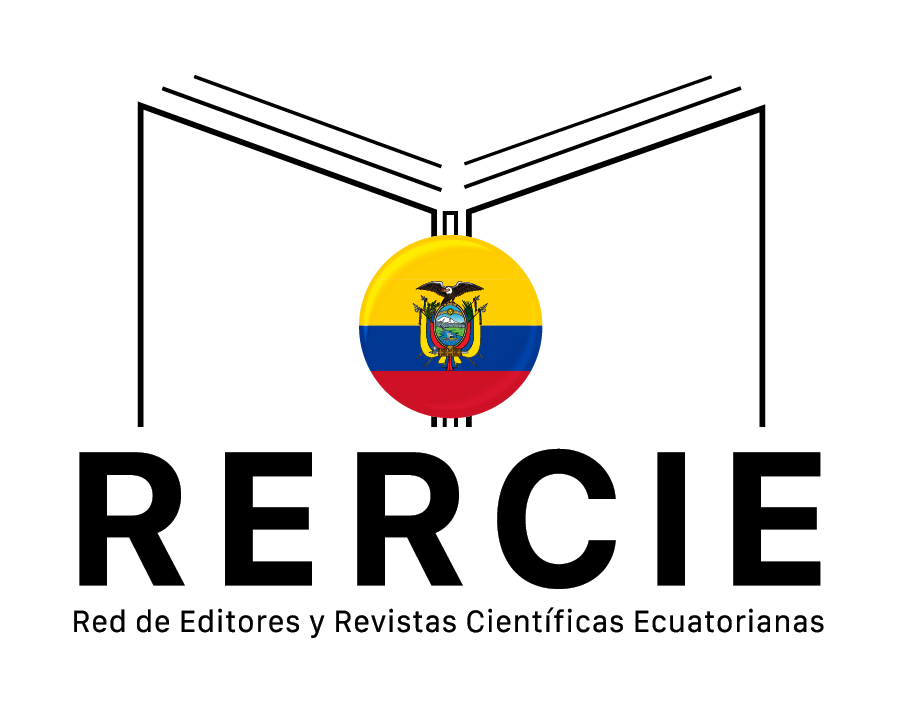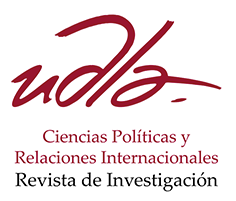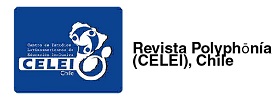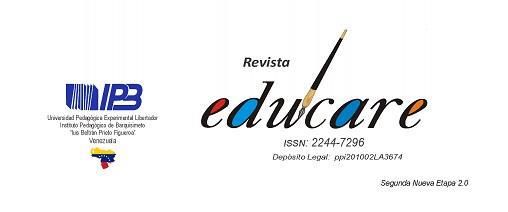CHARACTERIZING ENGLISH ASSESSMENT INSTRUMENTS: AN OVERVIEW OF THEIR DESIGN
DOI:
https://doi.org/10.37135/chk.002.15.05Palabras clave:
Assement, teaching, students, testsResumen
Assessment tends to be associated with students and learners; however, the term assessment encompasses both teachers and students. To understand the purpose of language assessment instruments, it is key to look for the designers and their preferences. This research aims to characterize 209 assessment instruments created by English teachers. This is a non-experimental and descriptive study that analyzes the types of instruments, the educational level, the language systems and skills, and the type and number of items. Two of the most important findings are related to the preferences Chilean English teachers have towards traditional assessment and the tendency to assess vocabulary and grammar; besides, the participants’ preference for tests and fill-in-the gap items.
Descargas
Citas
Alfallaj, F. & Al-Ahdal, A. (2017). Authentic Assessment: Evaluating the Saudi EFL Tertiary Examination System. Theory and Practice in Language Studies, 7(8), 597-607. doi: 10.17507/tpls.0708.01
Allen, M., Noel, R., Rienzi, B. & McMillin, D. (2002). Outcomes Assessment Handbook. Long Beach, CA, USA: California State University, Institute for Teaching and Learning.
Astawa, I. N., Handayani, N. D., Mantra, I. B. N. & Wardana, I. K. (2017). Writing English language test items as a learning device: a principle of habit formation rules. International Journal of Social Sciences and Humanities, 1(3), 135-144. doi: 10.29332/ijssh.v1n3.67
Bachman, L. F. (2004) Statistical analyses for language testing. Cambridge, Great Britain: Cambridge University Press.
Black, P. & Wiliam, D. (1998). Inside the black box: raising standards through classroom assessment. Phi Delta Kappan, 80(2), 139-148. Retrieved from https://www.jstor.org/stable/20439383
Boud, D. (1990). Assessment and the promotion of academic values. Studies in Higher Education, 15(1), 101-111. doi:10.1080/03075079012331377621
Brindley, G. & Wigglesworth, G. (1997). Access: issues in English language test design and delivery. Sydney, Australia: Macquarie University, National Centre for English Language.
CTL Illinois. (2019). Improving Your Test Questions. Retrieved from https://citl.illinois.edu/citl-101/measurement-evaluation/exam-scoring/improving-your-test-questions
Coltrane, B. (2002). English language learners and high-stakes tests: An overview of the issues. Washington DC: Center for Applied Linguistics.
Coombe, C. (2018). An A to Z of second language assessment: How language teachers understand. Assessment Concepts. London, UK: British Council.
Crooks, T. J. (1988). The impact of classroom evaluation practices on students. Review of Educational Research, 58 (4), 438-481. doi:10.3102/00346543058004438
Davis, B. G. (1993). Tools for Teaching. San Francisco, USA: Jossey-Bass.
Dickinson, D. K. & Tabors, P. O. (eds.). (2001). Beginning literacy with language: Young children learning at home and school. Baltimore, USA: Brookes.
Dikli, S. (2003) Assessment at a distance: traditional vs alternative assessments. Turkish Online Journal of Educational Technology-TOJET, 2(3), 13-19. Retrieved from https://files.eric.ed.gov/fulltext/EJ1101956.pdf
Farhady, H. (2018). History of Language Testing and Assessment. The TESOL Encyclopedia of English Language Teaching, 1–7. doi:10.1002/9781118784235.eelt0343
Frodden, M. C., Restrepo, M. I. & Maturana, L. (2009). Analysis of Assessment Instruments Used in Foreign Language Teaching. Íkala, Revista de Lenguaje y Cultura, 9(1), 171-201. Retrieved from https://revistas.udea.edu.co/index.php/ikala/article/view/3146
Jacobs, L. C. & Chase, C. I. (1992). Developing and using Tests Effectively: A Guide for Faculty. San Francisco, USA: Jossey-Bass.
Kalajahi, S. A. R. & Pourshahian, B. (2012). Vocabulary learning strategies and vocabulary size of ELT students at EMU in Northern Cyprus. English Language Teaching, 5(4), 138-149. doi:10.5539/elt.v5n4p138
Kennedy, K. J., Chan, J. K. S., Fok, P. K. & Yu, W. M. (2008). Forms of assessment and their potential for enhancing learning: conceptual and cultural issues. Educational Research for Policy and Practice, 7(3), 197-207. doi:10.1007/s10671-008-9052-3
Khoshsima, H. & Pourjam, F. (2014). A comparative study on the effects of cloze tests and open-ended questions on reading comprehension of Iranian intermediate EFL learners. International Journal on Studies in English Language and Literature (IJSELL), 2(7), 17-27. Retrieved from https://www.arcjournals.org/pdfs/ijsell/v2-i7/3.pdf
Law, B. & Eckes, M. (1995). Assessment and ESL. Manitoba, Canada: Peguis publishers.
Le Grange, L. L. & Reddy, C. (1998). Continuous Assessment: An Introduction and Guidelines to Implementation. Cape Town, South Africa: Juta legal and academic.
Martínez, J., Salinas, J. & Canavosio, A. (2014). La evaluación de la escritura en lengua extranjera (inglés) en el nivel superior: análisis de reportes docentes. [The evaluation of writing in a foreign language (English) in higher education: teachers’ reports analysis]. In Actas Congreso Nacional Subsede Cátedra Unesco UNR.
Matsuoka, W. & Hirsh, D. (2010). Vocabulary learning through reading: does an ELT coursebook provide good opportunities? Reading in a foreign language, 22(1), 56-70. doi:10125/66650
McKeachie, W. J. (1986). Teaching Tips. Lexington, Mass, USA: Heath.
Mertler, C. A. (2016) Classroom assessment: A practical guide for educators. London, UK: Routledge.
Ministerio de Educación de Chile (MINEDUC) (2019). En relación a la evaluación diferenciada. [In regards to differentiated evaluation]. Retrieved from https://www.ayudamineduc.cl/ficha/en-relacion-la-evaluacion-diferenciada-5
Sambell, K. & McDowell, L. (1998). The values of self and peer assessment to the developing lifelong learner. In Rust, C. (ed.). Improving student learning – improving students as learners (pp. 56-66). Oxford, GB: Oxford Center for Staff and Learning Development.
Schonlau, M., Gweon, H. & Wenemark, M. (2019). Automatic Classification of Open-Ended Questions: Check-All-That-Apply Questions. Social Science Computer Review, 20(10), 1-11. doi:10.1177/0894439319869210
Scully, D. (2017). Constructing multiple-choice Items to Measure higher-order thinking. Practical Assessment, Research & Evaluation, 22(4), 1-13. doi:10.7275/swgt-rj52
Spaan, M. (2006). Test and item specifications development. Language Assessment Quarterly, 3(1), 71–79. doi:10.1207/s15434311laq0301_5
Torres, J. & Perera, V. (2010). La rúbrica como instrumento pedagógico para la tutorización y evaluación de los aprendizajes en el foro online en educación superior. [The rubric as a pedagogical instrument for the tutoring and evaluation of learning in the online forum in higher education]. Pixel-Bit. Revista de Medios y Educación, (36), 141-149. Retrieved from https://www.redalyc.org/articulo.oa?id=36815128011
Wergin, J. F. (1998). Basic Issues and Principles in Classroom Assessment. In J. H. McMillan (ed.). Assessing Students' Learning; New Directions for Teaching and Learning, number 34 (pp. 5-17). San Francisco, USA: Jossey-Bass.
Publicado
Cómo citar
Número
Sección
Licencia
Derechos de autor 2021 Claudio DÍaz Larenas, Alan Felipe Jara Díaz, Yesenia Ester Rosales Orellana, María José Sanhueza Villalón

Esta obra está bajo una licencia internacional Creative Commons Atribución-NoComercial 4.0.
Responsabilidad de los autores:
Son responsables por las ideas y datos recogidos en los manuscritos, por la fidelidad de la información, por la corrección de las citas, por los derechos para publicar cualquier material incluido en el texto y por la presentación del manuscrito en el formato requerido por la Revista (plantilla word). Un manuscrito enviado a CHAKIÑAN no debe estar publicado con anterioridad, ni haber sido presentado en la misma forma a otro medio de publicación.
Derechos de Autor:
Los artículos publicados no comprometen necesariamente el punto de vista de la REVISTA CHAKIÑAN. La Revista se alinea a la política de la licencia de Creative Commons Reconocimiento-No comercial 4.0 Internacional (CC BY-NC 4.0). Cada autor conserva el derecho sobre el artículo publicado en Chakiñan.
Declaración de privacidad
Los datos personales y las direcciones de correo electrónico introducidos en esta revista se usarán, exclusivamente, para los fines declarados por la publicación y no estarán disponibles para ningún otro propósito u otra persona.



















